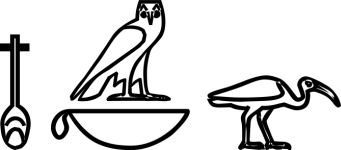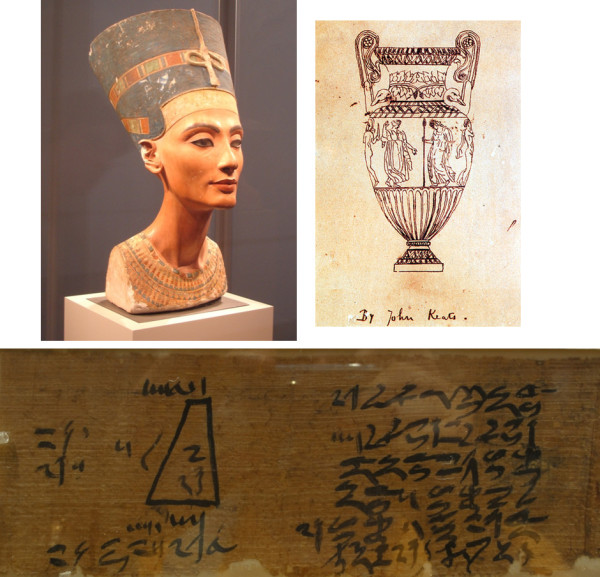What do these three pictures have in common?
The first is the bust of Nefertiti, an Egyptian queen. The bust is now in the Neues Museum in Berlin and is one of the most beautiful works of art. Nefertiti is translated as “a beautiful woman has come”. The word nefer is in this case translated as ‘beautiful’.
The second is a drawing of a Grecian urn by Keats. Keats’ Ode on a Grecian Urn ends with the line “Beauty is truth, truth beauty,”.
The third picture is part of the Moscow Mathematical Papyrus from ancient Egypt.
Look through the problems of the Moscow Papyrus and you will find a phrase as the last line of several completed problems , here transliterated into hieroglyphs:

OK, a quick lesson in hieroglyphs:
The birds face the beginning of the phrase, so we know to read this phrase from right to left. Most glyphs have a phonetic value (there are exceptions, but nothing troubling here) so we can say that phonetically the phrase reads:
Gem-ek Nefer
Gem is the verb to find, the suffix –ek means you, so you find something, but what?
The word nefer has several different meanings depending on the context. Hieroglyphic dictionaries list:
Good, beautiful, happy, perfect, wonderful, fair, kindly (of face), fine, pleasing, well.
Consulting translations of this problem though you will find this phrase translated as:
“You will find that it is correct”
Maybe they meant ‘beautiful’? Maybe to an Egyptian truth and beauty really are the same thing. The job of a good translator is to select from multiple possibilities to select words that convey the sense of what is being written. Does the selection of ‘correct’ change the meaning of this line?
Photo of the Moscow mathematical papyrus used with kind permission from Carles Dorce.

You